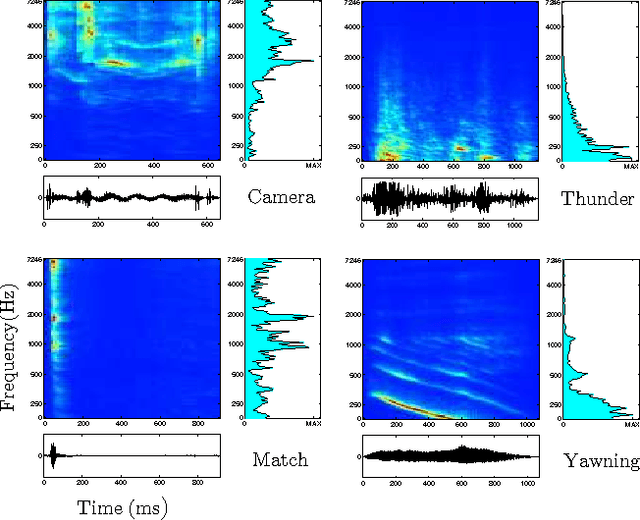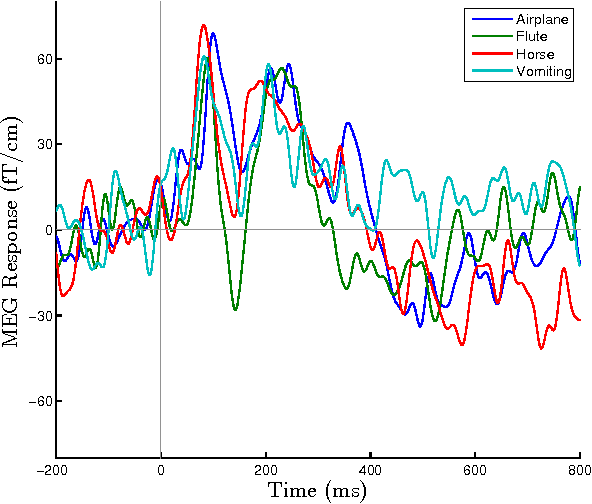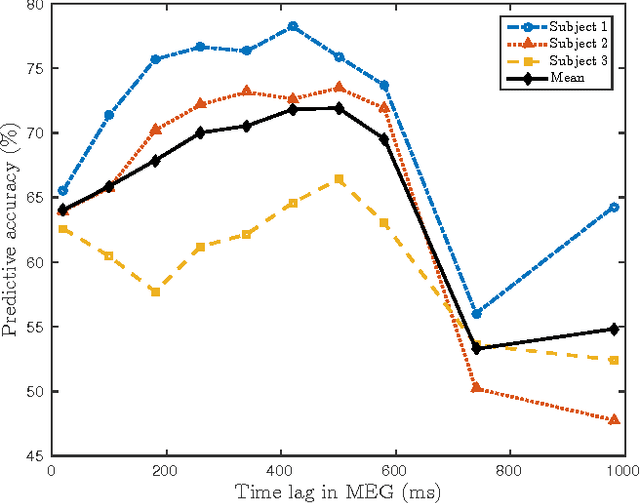Kernel convolution model for decoding sounds from time-varying neural responses
Paper and Code
Jul 21, 2015


In this study we present a kernel based convolution model to characterize neural responses to natural sounds by decoding their time-varying acoustic features. The model allows to decode natural sounds from high-dimensional neural recordings, such as magnetoencephalography (MEG), that track timing and location of human cortical signalling noninvasively across multiple channels. We used the MEG responses recorded from subjects listening to acoustically different environmental sounds. By decoding the stimulus frequencies from the responses, our model was able to accurately distinguish between two different sounds that it had never encountered before with 70% accuracy. Convolution models typically decode frequencies that appear at a certain time point in the sound signal by using neural responses from that time point until a certain fixed duration of the response. Using our model, we evaluated several fixed durations (time-lags) of the neural responses and observed auditory MEG responses to be most sensitive to spectral content of the sounds at time-lags of 250 ms to 500 ms. The proposed model should be useful for determining what aspects of natural sounds are represented by high-dimensional neural responses and may reveal novel properties of neural signals.
 Add to Chrome
Add to Chrome Add to Firefox
Add to Firefox Add to Edge
Add to Edge